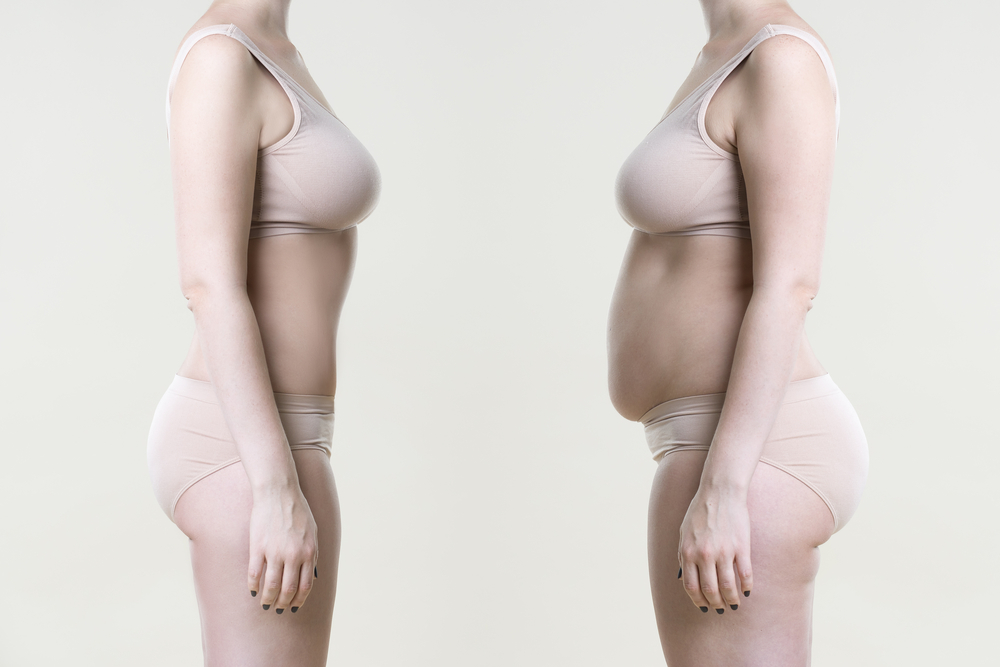Key Takeaways
-
As a body contouring procedure, liposuction is not intended to be a weight loss solution. It’s most effective when combined with a healthy lifestyle.
-
Exercise is an important factor in not just keeping your new liposuction figure, but improving upon it as well by stopping future fat deposits from forming.
-
Introduce low-impact exercises such as walking in the early stages of recovery to encourage blood flow and promote healing.
-
Once your body has healed, start gradually adding low-impact cardio and strength training exercises to your routine, targeting treated areas to improve definition.
-
Make sure to adhere to your surgeon’s post-op instructions and check with them when you begin or increase your level of exercise.
-
Combine regular exercise with a nutritious diet and adequate hydration to get the most out of your liposuction and help yourself feel your best.
Here’s why exercise is so important for enhancing your liposuction results. Most importantly, it assists you in preserving your new body contour that you acquired through the surgery. That’s where regular physical activity comes in, helping you maintain results long-term by keeping off any weight gain and enhancing newly contoured muscle tone.
Mild activities like walking can be begun soon after your surgery to help improve circulation and speed healing. Over time, incorporating strength training and cardio can help maintain a balanced weight and enhance the overall appearance by building lean muscle.
Exercise increases metabolism, assisting in controlling fat distribution and aiding in improved results. While liposuction removes fat cells, staying active ensures sustainable results and minimizes the chances of fat accumulation in untreated areas.
When you integrate exercise with an overall healthy lifestyle, you’ll experience the most benefits.
What Is Liposuction
Liposuction is a surgical procedure primarily intended for the removal of subcutaneous fat deposits that are resistant to diet and exercise. By focusing on areas that resist diet and exercise, it effectively sculpts and redefines the body for a more balanced, harmonious look. Usually the intention is to improved aesthetics.
This quest offers other priceless health dividends, such as enhanced insulin sensitivity and reduced inflammation markers like IL-6 and TNF-α.
Purpose of Liposuction
The main purpose of liposuction is to improve body contour by removing fat deposits that are located between the skin and muscle. These areas can include the abdomen, thighs, arms and flanks. This customized treatment plan helps patients achieve a more proportionate figure.
In addition, the mental health benefits can be huge. In turn, achieving their goal of their ideal body shape can significantly improve a person’s confidence and self-image. For most, this seemingly simple step turns into a miracle-making metamorphosis.
How Liposuction Works
During the procedure, a medical professional will use a cannula to remove fat cells from areas of concern. Tumescent liposuction involves a saline solution to make removing the fat easier. Laser-assisted techniques liquefy the fat prior to extraction.
Anesthesia will make you comfortable, and time at first will be spent resting, and then slowly getting back to normal activities. Walking is recommended as early as the first two weeks postoperatively to facilitate healing.
What Liposuction Does Not Do
Liposuction is not a replacement for weight loss or a healthy lifestyle. It does not prevent the return of weight, treat skin laxity, or address cellulite.
To keep results, you’ll need to continue healthy eating and exercise habits.
Why Exercise Is Important After Liposuction
Exercise is crucial to realizing and improving upon the results of liposuction surgery. While liposuction can help eliminate stubborn fat deposits, your final outcomes largely depend on your commitment to a consistent exercise routine in the months and years following the procedure. Incorporating regular physical activity into your daily life will significantly aid in weight maintenance and enhance your overall health and wellness.
Maintaining Long-Term Results
Being consistent is the best way to maintain the results of liposuction long-term. Not only does a regular exercise routine prevent new fat accumulation by keeping your metabolism active and regularly burning calories, making goals that you can realistically attain helps you stay engaged and encouraged.
Set concrete goals like walking for 30 minutes each day or taking a strength training class twice a week. Cardio, such as swimming or cycling, along with weightlifting offers a well-rounded regimen. For instance, jogging increases cardiovascular fitness and squats improve muscle definition.
Enhancing Body Contouring
While liposuction helps enhance your overall body contours, exercises aimed at specific muscle groups can further tone and shape to enhance your results. For example, planks will work to refine your core, whilst resistance bands offer the perfect way to tone your arms and legs.
Activities such as dancing or other aerobic exercises increase calorie burning, which work in tandem with resistance training for a toned appearance. A combination of these workouts can accentuate the treated areas, providing a sleeker, more toned look.
Supporting Overall Health and Wellness
Beyond aesthetic reasons to prioritize exercise after liposuction lies in your overall health. Gentle stretches help prevent stiffness, while more active forms such as yoga or brisk walking improve circulation, helping your recovery along.
In the long-run, regular physical activity builds a healthier, stronger heart and improves energy levels. With the advice of a fitness trainer or the liposuction surgeon, safe workouts can make exercise an enjoyable and effective lifelong wellness habit.
When to Start Exercising After Liposuction
Exercise is an important part of improving your liposuction results, especially during the liposuction recovery process. It’s crucial to gradually ease back into a consistent exercise routine as you heal, allowing your body the necessary time for optimal healing before resuming more vigorous activities.
Initial Recovery Phase
In the first two to three weeks post-op, stick to low-impact movements such as short, soothing walks. Walking speeds up your recovery time by improving circulation, reducing swelling, and lowering the risk of complications like blood clots.
To avoid breaking up the healing process, strenuous exercises such as running or lifting heavy weights should be withheld. Gentle activities, such as avoiding prolonged immobility through frequent position changes to improve circulation, should occur without stressing the liposuctioned areas.
Gradual Reintroduction of Activities
Once you’re past the first phase, you can gradually resume low-impact cardio exercises such as using a stationary bike or swimming. At weeks three to four, you may feel comfortable adding moderate exercises, such as a brisk walk or yoga, to your routine.
Try to keep your intensity at 40-60% of what you’re used to. You can resume light resistance training around the third week. Leave flexibility exercises, like deep stretches, for after liposuction to focus on your recovery.
Listen to your body at all times and never push beyond your limits.
Signs You Are Ready to Exercise
As swelling subsides, comfort improves, and recovery progress indicates, you’ll be ready for more activity. Most surgeons will recommend that patients wait four to six weeks before returning to pre-surgery activities.
Working together with your personal physician can help you maximize safety and achieve your desired results.
Safe and Effective Exercises After Liposuction
Exercise will be instrumental in maximizing your liposuction results, aiding your liposuction recovery, and supporting long-term weight maintenance. It’s important to resume a consistent exercise routine slowly and carefully for a safe, effective healing process. Below, we outline safe and effective exercises and how they can be incorporated into your recovery timeline.
1. Start with Light Walking
Gentle walking is often the best way to begin your post-liposuction activity safely. Slow, short walks will help with circulation, aid in swelling and overall help with healing.
In the initial two weeks, just do short walks to maintain comfort and mobility. Starting the third week, slowly increase the duration of your walks to about 20–30 minutes as you build your stamina.
As with any exercise program, listen to your body and stop if you experience any pain.
2. Focus on Low-Impact Cardio
Low-impact cardio options, such as swimming or stationary cycling, are perfect for after the first week or two of recovery. By about the six-week mark, these exercises can allow you to begin rebuilding stamina and cardiovascular health without putting stress on healing tissues.
Being regular, like 2–3 times a week, ensures cardiovascular fitness and sustaining outcomes.
3. Incorporate Strength Training Gradually
Light strength training can resume after three weeks, emphasizing higher reps with lighter loads. Resistance bands or small dumbbells are ideal equipment to restore muscle tone safely.
Form matters—wrong form can delay your recovery and even lead to injury.
4. Target Core and Stability Exercises
Core and stability exercises, such as modified planks or seated balance exercises, build strength for better posture and body control. Safe, effective exercises after liposuction to tone those tummy muscles without too much stress can be added slowly.
These exercises are especially important for maintaining long-term results.
5. Avoid High-Intensity Workouts Initially
Avoid high-intensity exercises like running or HIIT, which will be off-limits for at least 3–6 weeks after your procedure. These activities can impede healing and increase the chance of complications.
Rather, focus on safe, low-impact exercises in the meantime. Your surgeon will typically give the go-ahead for a return to more intense routines by about 12 weeks post-op.

Benefits of Exercising After Liposuction
Here are some additional benefits of exercising after liposuction. It aids in your body’s natural healing processes and sets you up for better long-term health. Liposuction is a permanent fat removal procedure.
To maintain those results, you need to continue living a healthy lifestyle, and exercise is one of the most important components of your post-surgery care. Start with low-impact exercises such as walking. Then, over the course of a few weeks, you may be able to build up the intensity of your routines with your healthcare provider’s guidance.
Improved Blood Circulation
Enhanced blood flow is a major benefit of physical activity following surgery, bringing oxygen and nutrients vital to healing. This increase in circulation aids in minimizing post-liposuction swelling and bruising.
Begin with low-impact movement such as walking immediately after the procedure. Once you’re able to get back into the routine of exercising, you can start incorporating more regimented practices – think yoga or light aerobics. Improved blood flow helps your vascular system as well, allowing your body to heal without disruption or difficulty.
Faster Recovery Process
Consistent movement encourages lymphatic drainage, to help your body eliminate excess fluids, puffiness, and recover more quickly. During those first weeks, prioritize gentle movement such as stretching or low-impact workouts.
They help to facilitate recovery with a body-friendly, low-impact approach. Taking the time to slowly build your tolerance helps you get back on your feet while minimizing the risk of injury or regression.
Reduced Risk of Fat Accumulation
Exercise improves your body’s metabolism, which is important for avoiding the creation of new deposits of fat after surgery. By integrating cardio exercise with strength training, you’ll be better able to keep a healthy weight and build muscle definition.
These long-term exercise routines will help maintain the surgical results, but they will help improve body composition and increase overall fitness.
Boosted Energy Levels and Mood
Since exercise boosts your energy levels, you’ll find that doing everyday tasks is a lot simpler and more fun. In addition, the endorphins released during exercise will work as a natural antidepressant, soothing any mood swings or fatigue that may arise after surgery.
Finding activities you genuinely enjoy, such as swimming or dancing, can keep you motivated and consistent in your fitness journey.
Common Challenges and How to Overcome Them
Recovering from liposuction isn’t just about healing. It’s an opportunity to improve your results by creating new, healthier habits. It might feel daunting to introduce exercise after surgery, but with a little planning and the right strategies at your side, you can overcome these challenges with confidence.
We’ll take a look at some of these challenges below and discuss how you can address them with confidence and compassion.
Managing Post-Surgery Discomfort
Experiencing post-workout pain is normal post-liposuction, but there’s a proper way to transition back to exercise. Gentle stretching and mobility exercises like seated leg lifts or shoulder rolls can help minimize stiffness and increase range of motion.
Gradually beginning with gentle exercises two weeks after surgery will reduce stiffness while encouraging blood flow. Listen to your body—if something hurts, reduce your effort or change your movement.
Capping post-surgery workouts at no more than 60% of your pre-surgery workload helps recovery stay on the right track.
Overcoming Fear of Injury
Worries about getting hurt can keep you from working out again, but learning how to be safe can help you feel confident enough to get moving. Low-impact activities, such as walking or swimming, are great options to begin with.
These movements reduce stress on the body while helping to build stamina over time. With time, work your way up to moderate aerobic activities (working toward 150 minutes per week).
Keep in mind that slow and steady wins the race. This strategy avoids crashes and accelerates future victory.
Staying Consistent with Workouts
The most important thing to remember is that consistency is the best way to improve your performance. Plan to work out three times a week for 30 minutes each time.
Set realistic expectations, such as aiming to lose 1-2 lbs per week. Seeing progress goes a long way toward maintaining motivation.
Whether through a group or a personal trainer, having accountability and motivation from others will hold you to a higher standard. Pair these initiatives with a focus on mindful eating to see 25% more success.
Tips for Maximizing Liposuction Results with Exercise
Exercise is the key component for maximizing your liposuction results, particularly during the liposuction recovery process, by promoting your recovery and preserving your results for years to come. Adding a smart exercise regimen, including light exercises, is a great way to chisel your new results and maintain them while improving your health and well-being.
Follow Your Doctor’s Recommendations
First and foremost, always adhere to your surgeon’s recommended post-op exercise regimen. Physicians will usually always tell patients to begin their exercise routine with simple, low-impact movements, such as walking, to stimulate blood circulation and swelling.
Personalized advice and recommendations are key, as each recovery journey is unique. That’s why most surgeons recommend you wear your compression garments 24/7 for at least the first one to two weeks post-op. This practice prevents any unintentional fluid retention and keeps the results intact.
Eventually you may only need to wear them during the day. Expert guidance will help you get back to exercise safely while avoiding complications.
Stay Hydrated During Workouts
Maintaining proper hydration is important not only for maximizing workout performance, but for recovery. Drink at least eight 8-ounce glasses of water each day and drink more fluids on days that you exercise.
Include water breaks throughout your day, particularly during cardio or strength training workouts. Proper hydration supports your energy levels, helps avoid cramping, and flushes out toxins, which is all beneficial for your healing process.
Pair Exercise with a Healthy Diet
To ensure your results last, pair your exercise routine with a diet rich in nutrients. Choose lean proteins, whole grains, and fresh vegetables to give your body the nutrition it needs to recover and achieve your fitness goals.
Practice portion control and mindful eating to keep from overdoing it to balance out your new exercise routine. Pairing strength training with a diet packed with fiber and protein will help you achieve toned muscles.
Plus, this winning combination will ensure you’re better able to keep your newly sculpted physique. Combining exercise with the right expectations will help you achieve results that last.
Monitor Progress and Adjust Routine
Monitoring your progress helps you stay focused and shows you where you need to work harder. Incorporate at least 150 minutes of moderate aerobic activity into your weekly routine, or combine cardio with muscle strengthening.
By regularly logging your workouts, you can quickly adjust your workouts to maximize your benefits. Modify according to where you are in your recovery and your level of fitness.
Focus on the progress. Celebrate little victories, such as greater stamina or being able to lift heavier weights, and you’ll keep yourself motivated along your path.
Conclusion
It’s clear that exercise plays a significant role in helping you achieve the most flattering results following your liposuction. It prevents you from regaining the weight, increases your energy, and contributes to better health. By beginning at a low intensity level and carefully selecting the best exercise routines, you can ensure an easier, safer recovery. Whether you choose light walks or progressive strength training, regular activity provides a great foundation for continued success in the long run.
Self-care post-op doesn’t have to be overwhelming. Basic things such as getting up and moving often and paying attention to what your body is telling you will go a long way. It’s the little things done repeatedly that deliver the best results in the long run.
Make a habit of doing the things that feel good and make your body move and let exercise flow organically into your life. Your body will thank you—and so will your results!
Frequently Asked Questions
What is the role of exercise after liposuction?
Here’s how exercise can help you maintain your results: Exercise training improves muscle tone and aids in liposuction recovery. While liposuction can remove stubborn fat, it doesn’t enhance muscle tone, but it improves blood flow, supporting the healing process.
When can I start exercising after liposuction?
You can start light exercises like walking within a few days after surgery, while strenuous activities may need to be deferred until 4–6 weeks for optimal healing, as directed by your surgeon.
What are the best exercises to do after liposuction?
Consider beginning with low-impact exercises such as walking or yoga as part of your liposuction recovery process. Then, slowly introduce strength training and cardiovascular workouts to achieve a toned physique and maintain your ideal weight.
Why is exercise important after liposuction?
Regular exercise is essential for weight maintenance, as it prevents new fat accumulation and supports overall health, ensuring a successful liposuction journey.
What are common challenges when exercising post-liposuction?
To avoid stiffness, soreness, and fatigue during the liposuction recovery process, start slow with light exercises, stay hydrated, and listen to your body.
How can I maximize my liposuction results with exercise?
Be regular and get into the habit of incorporating light exercises into your routine. Concentrate on strength-building targeted exercises and combine your regimen with healthy eating habits for effective weight maintenance.
Is it safe to exercise after liposuction?
Yes, but not until you’ve healed from your liposuction procedure. Listen to your surgeon’s post-op timeline and avoid high-impact activities until you’re completely healed for effective recovery.





















